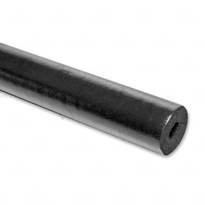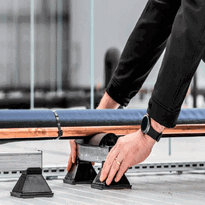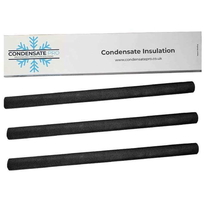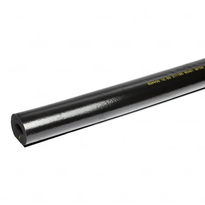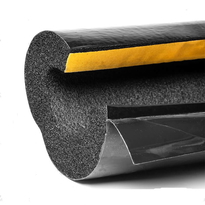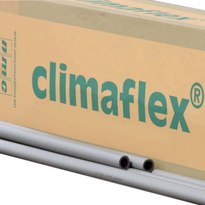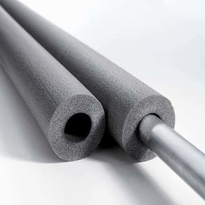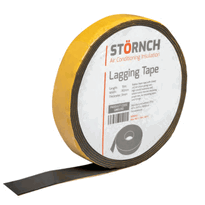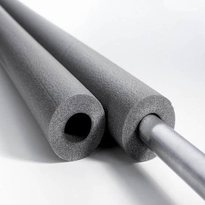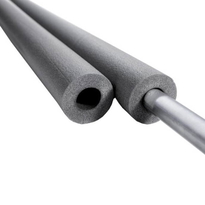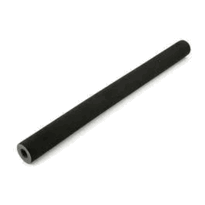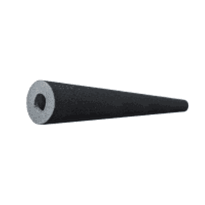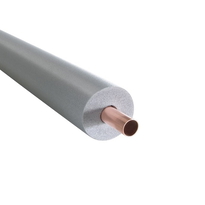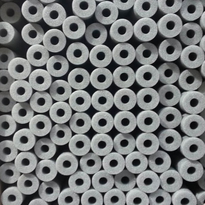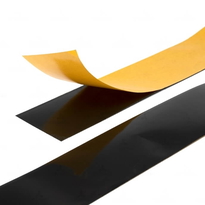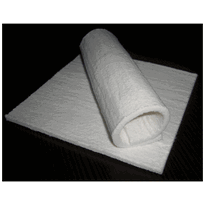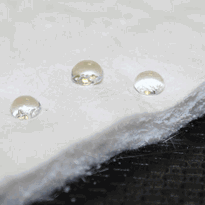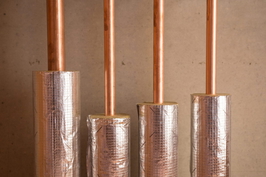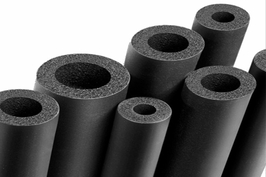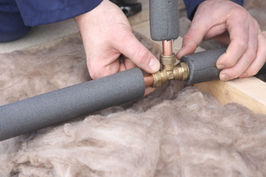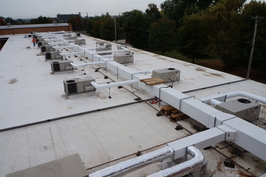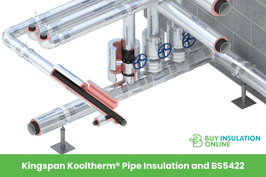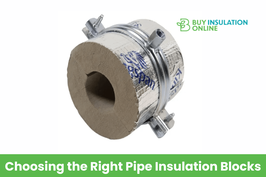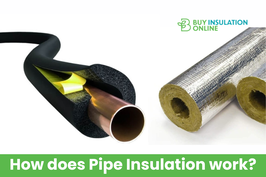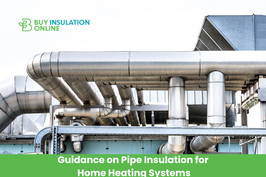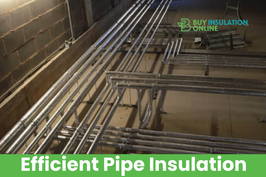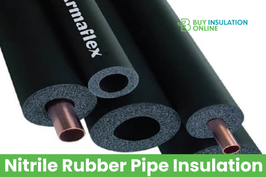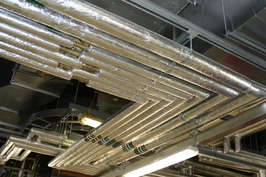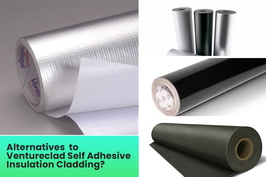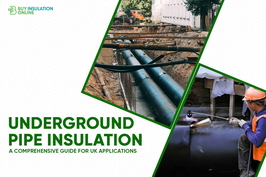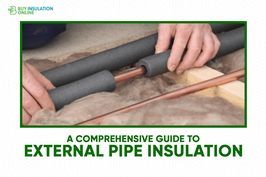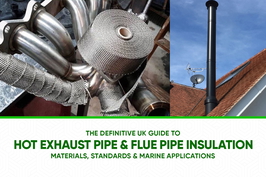Pipe lagging for outside taps
Insulating outside taps with suitable pipe lagging materials is essential to prevent water from freezing during the colder months. Proper insulation reduces the risk of pipes bursting and causing damage. Common materials include polyethylene, foam insulation, and rubber, which are straightforward to install around the tap and connected pipework.
To enhance protection, these materials should be sealed with waterproof tape, ensuring a secure and watertight fit. Using weather-resistant covers can further shield the tap from moisture and frost, offering extra peace of mind during severe weather conditions.
For effective insulation, careful installation is key. Start by cleaning the area around the outside tap and pipe. Wrap the lagging material snugly around the pipe and tap, ensuring there are no gaps. Secure the insulation with waterproof tape, making sure all joints are well sealed. Finally, fit a weather-resistant cover over the tap for additional protection.
Regular maintenance is important to keep the insulation effective. Check periodically for any damage or wear, and replace or repair the lagging as needed to ensure ongoing protection. By following these steps diligently, you can minimize the risk of frozen pipes and avoid costly repairs in the winter months.
The Significance of Insulating Outside Taps During Cold Weather
During cold weather, insulating outside taps is a vital step to prevent the water inside the fixtures and connecting pipes from freezing. Freezing water expands, increasing internal pressure within pipes and taps, which can lead to cracks or bursts. Such damage often results in costly repairs and can cause significant water leakage. Water in outdoor tap or pipes can freeze during cold weather. Proper insulation effectively stops water in these outdoor fittings from freezing, reducing the risk of pipe failure. This is especially important for preventing external damage and ensuring the integrity of plumbing systems. This not only protects the plumbing infrastructure but also ensures a continuous water supply throughout the winter months. Insulating external taps can help homeowners and property managers avoid emergency repairs, minimize water wastage, and prolong the lifespan of outdoor plumbing systems. Implementing insulation measures contributes to overall safety, operational reliability, and cost efficiency during colder periods. It's a simple yet essential action to safeguard your property, prevent water damage, and maintain functionality during the harsh winter weather.
Types of Pipe Lagging Materials for Outdoor Applications
When selecting pipe lagging materials for outdoor applications, it's important to consider specific properties that ensure effective insulation, durability, and resistance to environmental elements. Polyethylene and foam-based materials are popular options, providing reliable performance across various conditions.
Polyethylene is a lightweight, moisture-resistant material that's easy to install and offers good thermal insulation. Rigid foam insulations deliver high compressive strength, making them suitable for protecting pipes from mechanical impacts and possible damage. Flexible elastomeric foams are particularly effective at accommodating complex shapes and provide excellent moisture barriers, helping to prevent water infiltration. Polyethylene is also known for its toughness and chemical resistance, making it suitable for outdoor environments. Additionally, selecting materials with environmental resilience ensures longer-lasting insulation despite fluctuating weather conditions.
Closed-cell structures are advantageous in these applications because they prevent air and water ingress, thereby enhancing thermal performance. Cellular glass foam combines durability with chemical resistance, which makes it an ideal choice for harsher environments exposed to chemicals or extreme weather conditions.
Alternatives such as fibre-reinforced materials and mineral wool offer high thermal resistance and fireproofing qualities but typically require additional weatherproof layers to ensure durability when used outdoors. Rubber, elastomeric foam, and advanced insulation materials like polyisocyanurate and phenolic-based insulations also provide high-performance options that balance excellent insulation properties with resilience against climatic influences.
Step-by-Step Guide to Installing Pipe Lagging on Your Outside Tap
Proper installation of pipe lagging on an outside tap begins with careful preparation and organization of necessary materials and tools. First, identify the tap location, ideally where the piping is accessible near the indoor water mains or sinks. Gather lagging wrap or foam insulation, waterproof tape, scissors or a utility knife, and outdoor faucet covers if applicable.
Clear the area around the tap to ensure unobstructed access, and make sure the surfaces are dry. Turn off the water supply to the tap, then drain any remaining water to prevent freezing during installation. Measure the length of pipe from the wall to the tap, then cut the insulation to the appropriate size. Proper insulation helps prevent heat loss and freezing in cold weather.
Apply the insulation around the pipe, ensuring an even coverage that seals all sides. Seal any joints or seams with waterproof tape to prevent draughts and moisture ingress. Using airtight membranes or tapes enhances energy efficiency and moisture control, insulating the connecting stem and flange, wrapping them carefully to minimize heat loss. Secure the insulation at both ends with the tape or appropriate clips to keep it firmly in place.
Finally, add a weatherproof tap or faucet cover for added protection against the elements. This extra layer helps prevent frost damage and maintains the efficiency of your plumbing during cold weather.
Essential Maintenance Tips to Maintain Effective Lagging and Prevent Freezing
Regular inspection and maintenance of pipe lagging are essential to ensure its continued effectiveness in preventing freezing and damage during cold weather. This involves checking the lagging for cracks, tears, or moisture damage before winter begins, which helps identify areas needing repair or replacement. Maintaining proper insulation is crucial. Any worn or compressed insulation should be replaced to maintain optimal thermal protection. It's also vital to verify all joints and seams are properly sealed with waterproof tape or sealant to prevent cold air from infiltrating and to remove dirt or debris to avoid moisture retention that could compromise the insulation. Using high-quality, weather-resistant materials suitable for outdoor conditions, such as closed-cell foam or rubber-based insulation, enhances durability. Additionally, ensuring proper installation techniques can significantly improve the longevity and effectiveness of the lagging. Regular early-season inspections and prompt repairs significantly reduce the risk of lagging degradation, ensuring effective freeze protection throughout the winter months.
Safety Measures and Regulations for Proper Outdoor Pipe Insulation
Are safety regulations crucial when insulating outdoor pipes to prevent accidents and ensure compliance with legal standards? They're indeed essential, as proper insulation safeguards both workers and infrastructure by preventing hazards such as burns, pipe bursts, and structural failures. Proper insulation application also plays a key role in reducing energy loss and maintaining system efficiency, which is vital for long-term safety and performance. Implementing thermal insulation standards ensures that materials used are suitable for the environmental conditions and temperature ranges they will face, ultimately enhancing durability and safety.
Regulations require the use of water-retardant, UV-resistant covers for exposed pipes, with insulation materials securely sealed at all joints to prevent moisture ingress. Waterproof casings or crush-resistant sleeves are recommended to protect buried pipes from environmental damage.
Insulation intended for pipes carrying extreme temperatures must meet specific K-value benchmarks to ensure adequate thermal resistance. Protective jacketing, such as aluminium or weather-resistant materials, shields the insulation from wind and moisture, helping to maintain its effectiveness over time.
Regular inspections of covers and joints are vital to identify any deterioration and to uphold safety standards, ultimately ensuring that outdoor pipe installations remain durable, compliant, and safe.
Conclusion
Effective pipe lagging for outside taps plays a crucial role in reducing the risk of freezing and consequent pipe damage during colder months. Choosing high-quality insulating materials suited for outdoor use, ensuring proper installation, and conducting regular maintenance are vital steps in maintaining the effectiveness of the insulation. Adherence to safety guidelines throughout the process not only safeguards those involved but also ensures compliance with relevant UK regulations. Implementing these measures provides a dependable shield against winter plumbing issues, helping to preserve the integrity and functionality of outdoor taps in adverse weather conditions.
